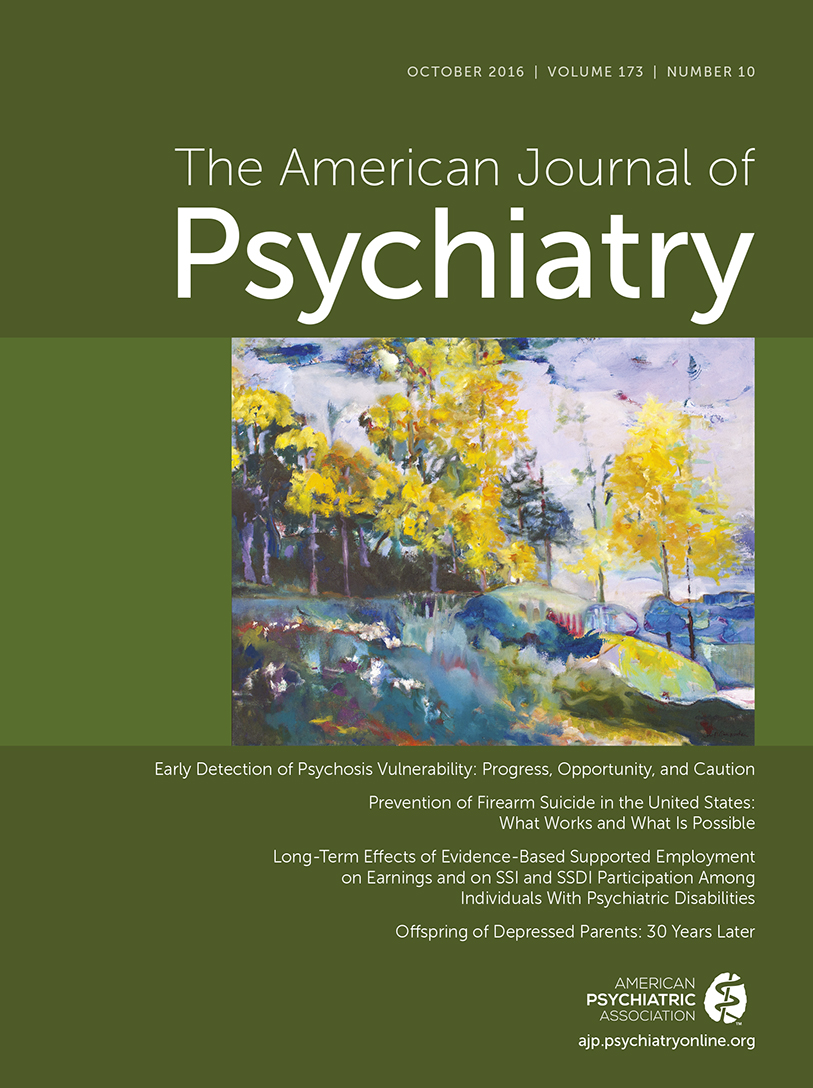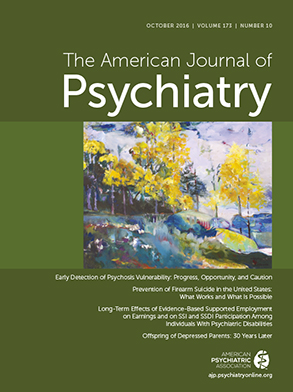T
o the E
ditor: Ruan et al. raise the possibility that ultra-low-dose buprenorphine reduces suicidal ideation, as it did in our double-blind, placebo-controlled trial (
1), by alleviating physical pain. We agree with them that there is ample evidence to suggest that patients who suffer from physical pain are at high risk for suicidal ideation and suicidal acts (
2). Adequate pain control may therefore decrease suicidality in such patients. However, most patients in our study did not suffer from physical pain.
All potential subjects in our trial underwent a workup that included a detailed medical history and a complete physical examination. Of the 88 patients in our intent-to-treat group, three were found to have fibromyalgia, and the rest were free of significant physical pain. Several other potential subjects were also found to have physical pain but were screened out because of medical illnesses or a history of heavy analgesic use.
Thus, while our findings do not prove that ultra-low-dose buprenorphine reduces suicidal ideation by decreasing mental pain, they do suggest that ultra-low-dose buprenorphine may serve as a quick-acting treatment for suicidal individuals, including those who are free of physical pain.
This raises the enduring question of the relationship between physical pain, mental pain, and suicidality. As reviewed by Elman et al. (
2), several lines of evidence suggest that the colloquial terms “broken heart” and “heartache” may reflect a sad existential truth: mental pain hurts so much that it may lead to suicide.
Since Shakespeare’s “To be, or not to be” monologue, in which Prince Hamlet contemplates suicide in order to “end the Heart-ache” (
3), mental pain has been associated with suicidality in poetry and prose. Many, and perhaps most, suicidal individuals who come to the attention of mental health professionals seek death not because they want to stop living but because they want to stop suffering.
In a recent systematic review, Verrocchio et al. concluded that “mental pain is a core clinical factor for understanding suicide” (
4). Specifically, they found mental pain to be a stronger factor of vulnerability for suicidal ideation than depression.
Mood symptoms may be experienced and described as physical pain in some cultures, and mood and somatic symptoms are often positively correlated (
5). However, we agree with Verrocchio et al. that mental pain “is no less real than other types of grief” (
4).
In our opinion, clinicians should be open to the possibility—not the certainty—that judicious short-term use of ultra-low-dose buprenorphine may quickly decrease severe suicidal ideation by ameliorating the experience of mental pain.

